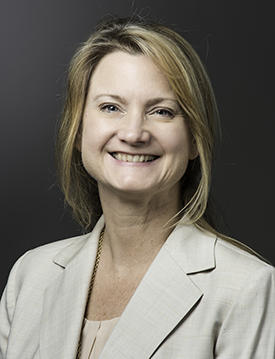Topics
In This Story

Dr. Debora Goldberg is an expert in primary care practice transformation, patient experience, and care for the underserved, with her current and upcoming research focused on workplace health and wellbeing.
New George Mason University Study is one of first to explore the effects of individual and organizational capacity for change on burnout among health care professionals.
Even prior to the pandemic, burnout among health care professionals was a pervasive public health concern, with some studies reporting burnout in more than 50% of clinicians. During the COVID-19 pandemic, health care professionals are required to work even longer hours in high stress situations. Understanding causes of burnout and factors that can protect against it can help improve quality of life for the health care workforce and quality of care for patients.
New research by faculty in George Mason University’s College of Health and Human Services found that health care professionals with a greater personal ability to respond to change experienced lower rates of burnout when their work environments offered strong communication, teamwork, and leadership support. This is one of the first studies to look at both individual response to change and organizational capacity for change and how these factors affect burnout among health care professionals.
Dr. Debora Goldberg led the study published in the Journal of General Internal Medicine. Goldberg is an expert in primary care practice transformation, patient experience, and care for the underserved, with her current and upcoming research focused on workplace health and wellbeing.
“We know that health care work environments and job demands have a profound effect on the health and well-being of those delivering care, and they may even influence the quality of health care received by patients,” explains Goldberg. “Especially as our health care professionals and systems are being pushed to the limit in response to the COVID-19 pandemic, it is imperative that we are more aware of the influences of the work environment and job demands on health care professionals’ health and well-being.”
Goldberg and colleagues surveyed 1,279 individuals in 154 primary care practices in Virginia. They measured the practices’ capacity for change, individuals’ change readiness, hours worked per week, and burnout. Participants were part of the Agency for Healthcare Research and Quality Heart of Virginia Healthcare (HVH) collaborative, which supported these practices with transformation and implementation of evidence-based cardiovascular care as they made major changes in operations and employee roles.
Burnout was measured with a single question on whether the health care professionals were experiencing burnout, a measure previously validated and used in workplace studies. Individual change readiness was measured with the Change Diagnostic Index©(CDI), which was developed by Dr. Victoria Grady in Mason’s School of Business. Typically, the CDI is used in organizations that are planning for large change initiatives, and this is the first time it has been applied in primary care. The CDI measures individual attitudes toward organizational change in the areas of anxiety, frustration, delayed development, rejection of the environment, refusal to participate, withdrawal, and overall attitude. These individual attitudes can be indicators of larger organizational issues with morale, productivity, motivation, conflict, absenteeism, turnover, and overall organizational issues. The capacity of practices to change was measured by the practice adaptive reserve (PAR) instrument, which asks about an organization’s communication, teamwork, relationship trust, leadership, work environment, adoption of innovations, and learning systems.
Consistent with their earlier work, the researchers found that providers were more likely to report burnout (25.5%) than other professionals (19.9% of clinical support staff, 17.5% of administrative staff).
Among all types of health care professionals (providers, clinical support staff, and administrative staff), both practice and individual factors were related to levels of burnout. Lower levels of burnout were reported among those who had higher scores for individual response to change as well as practices that had higher organizational capacity for change. As the change capacity of the practice increased, burnout in healthcare professionals decreased. As health care professionals had more positive responses to change, burnout decreased.
Higher levels of burnout were reported among those who worked more hours per week, were part of a larger practice (more than 10 clinicians) or were part of a single specialty practice.
“We found that the capacity of the practice to change influenced the relationship between individual response to change and burnout,” added Goldberg. “Therefore, we recommend that physician practices and health care systems implement initiatives to reduce burnout by creating positive work environments through interprofessional teamwork, employee engagement, and enhanced communication.”
This study was funded by the Agency for Healthcare Research and Quality (AHRQ) under grant number R18HS023913.
About George Mason University
George Mason University is Virginia's largest and most diverse public research university. Located near Washington, D.C., Mason enrolls 39,000 students from 130 countries and all 50 states. Mason has grown rapidly over the past half-century and is recognized for its innovation and entrepreneurship, remarkable diversity and commitment to accessibility. For more information, visit https://www2.gmu.edu/.
About the College of Health and Human Services
George Mason University's College of Health and Human Services prepares students to become leaders and shape the public's health through academic excellence, research of consequence, community outreach, and interprofessional clinical practice. George Mason is the fastest-growing Research I institution in the country. The College enrolls more than 1,900 undergraduate and 1,370 graduate students in its nationally-recognized offerings, including: 5 undergraduate degrees, 13 graduate degrees, and 7 certificate programs. The college is transitioning to a college public health in the near future. For more information, visit https://chhs.gmu.edu/.
